House Trap/Levitation Trap
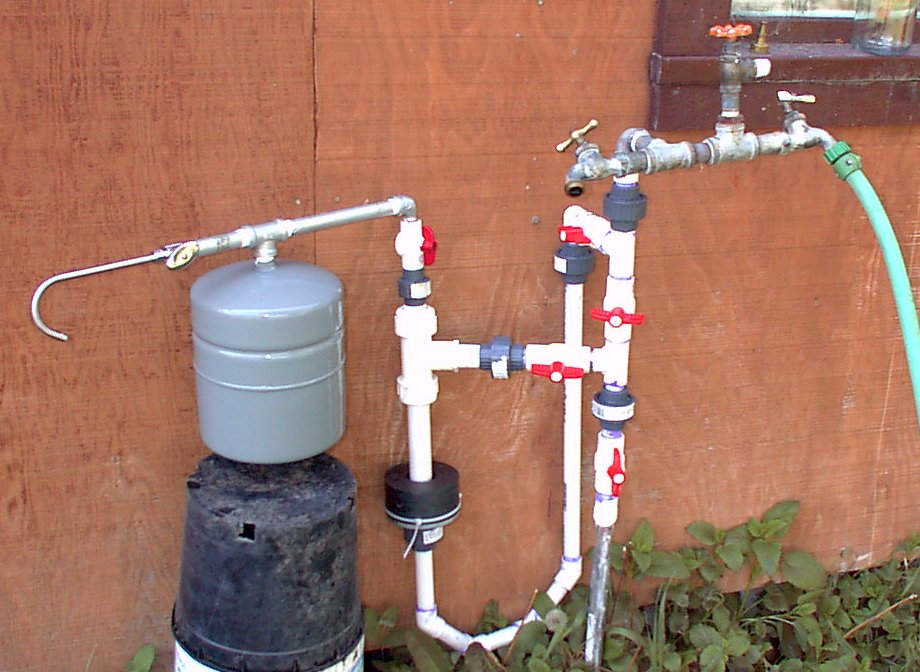
This is a picture of the House Trap in operation
The gray pressure tank on the left is for output storage
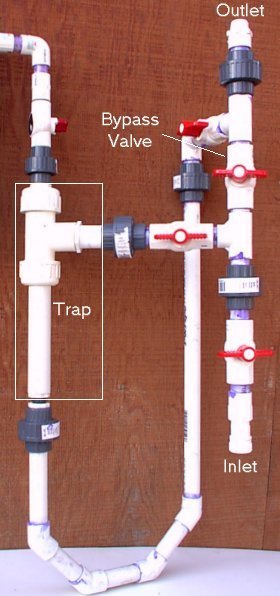
This is a labeled image of the components of the House Trap
(The magnets are not shown in this image)
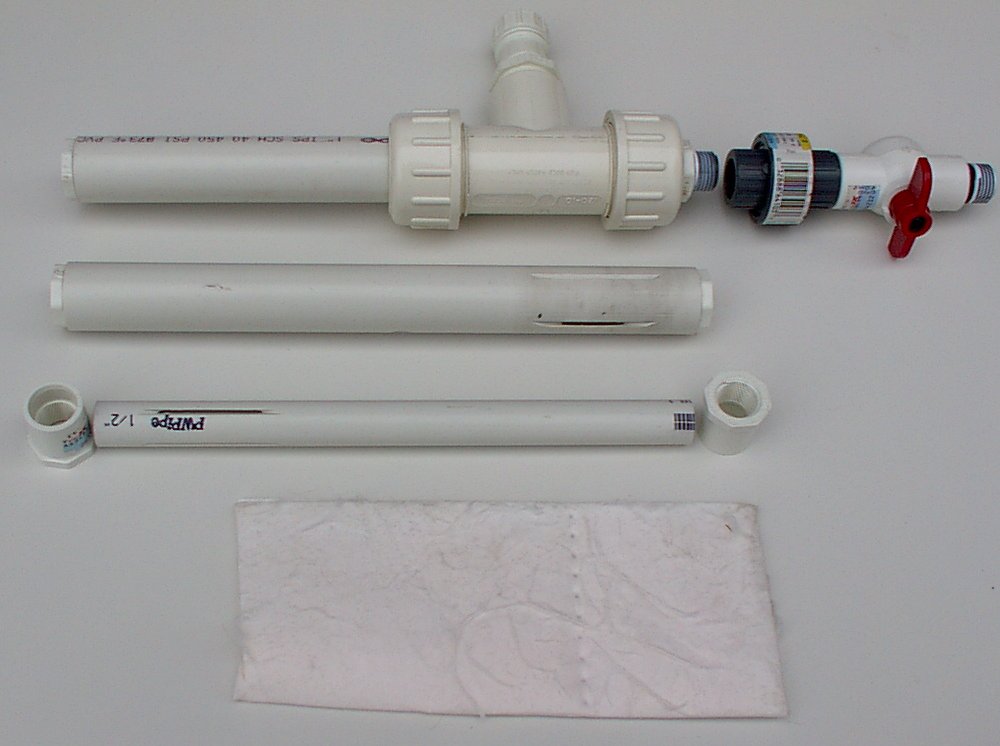
Here is an image of the components of the trap portion of the House
Trap
The inner pipe is 11" of 1/2" PVC
The outer pipe is a foot of 1" PVC
And the fabric is oil absorbing fabric
The oil absorbing fabric is rolled tightly and inserted into the inner
pipe down almost to the slots.
The trap uses two PVC tubes. The inner tube is an 11 inch long section
of half inch schedule 40 PVC pipe. It has four 3/32" slot evenly distributed
around the lower end. These slots are angled so that they move the water
in a counter clockwise direction. The outer tube is 12 inches of one inch
schedule 40 PVC pipe. The slots in the outer tube are the same as the inner
slots except that they are at the top. You must cut them so that they also
spin the water counterclockwise.
All of the slots on both tubes are tangental to the inside circumference
of the pipe and they are about 2 3/8" long on the outside tapering down
to 1 1/2" on the inside.
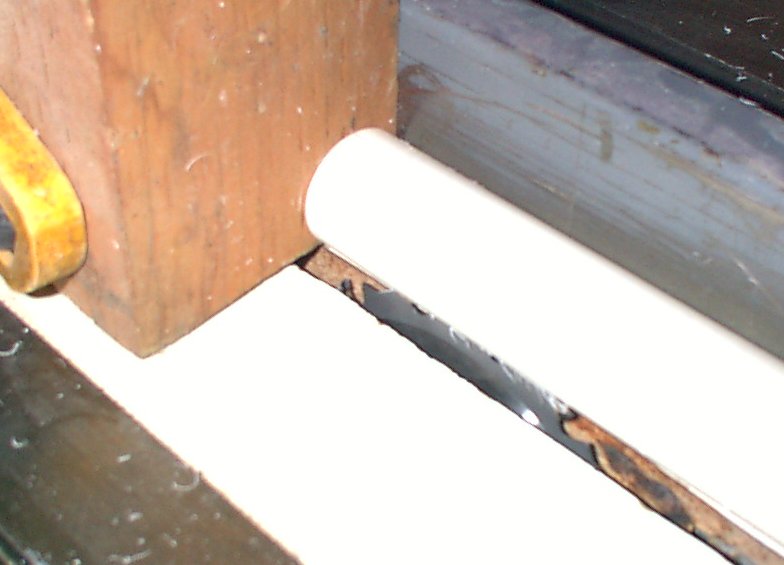
Three slots are cut in the inner and outer pipes by raising a table
saw blade into them.
The slots were cut with a 5 1/2" inch diameter thin kerf saw blade which
was raised into the tube. You cannot lower the tube into the blade as this
will cause the tube to kick back at you. It is best if the tube is clamped
to the fence of the table saw and the blade is raised into it.
All of the slots start about 3/4" from the end of the pipes.
The two tubes are assembled one inside the other using a couple of 3/4"
male slip to 1/2 inch female thread bushings. The end away from the thread
must be reamed out so that the inner 1/2 inch pipe will fit inside. This
bushing will not fit inside every brand of one inch PVC pipe so you may
have to check around to find one which fits.
Before these are assembled and solvent welded together a piece of oil
absorbent fabric must be rolled tightly and inserted into the inner pipe
so that it extends from the top of the inner pipe almost down to the slots
at the bottom. This fabric should be a nice tight fit as it must resist
the full pressure of the water pushing against it.
The inlet water is directed into the four upper slots on the outer tube
by a one inch compression tee. This part might be a little difficult to
find as it is not generally carried by consumer hardware stores. You are
more likely to find it at a plumbing specialty shop.
The rest of the trap illustrated in the pictures is just there to get
the water to and from the trap portion. I made my trap with more valves
and unions than necessary in order to have something that I could easily
modify while it was connected to my home water system.
The metal tank in the picture is a small pressure tank which also provides
a magnetically shielded space for the ORMUS water that has been captured
by the trap. This pressure tank holds about a gallon of liquid and provides
full pressure till it is empty.
Eventually I want to have all my domestic water run through this trap
and have a spigot mounted on my sink for the ORMUS trap water.
I used four ceramic ring magnets on my trap. These magnets are four
and a half inches in diameter with a 1.75 inch inner hole. They are about
half an inch thick. These magnets are oriented so that their upper face
attracts the south end of a compass needle.
This should be enough to get folks started with this trap design.
Following is some information about the water from this trap:
The static pressure at my tap is about 90 psi. I cannot measure active
pressure into the trap without making extensive modifications to it but
the active pressure going into my three stage Tiny Trap is about 40-50
psi.
Between 10:20 AM and 11:20 AM on 5-15-01 I measured the volume of water
use and the volume of trapped water. I got 3.21 liters of water from the
trap after running it for one hour. This matches the amount I got in the
same length of time a few days ago. My water meter indicated that I used
75.95 cubic feet (2038.24 liters) of water in this same hour. I did not
use any other water in my house. This figures out to a ratio of approximately
635 units of total source water to 1 unit of trap water.
I also calibrated my pH meter and measured the pH of the different water
components. These measurements were:
| Source |
pH |
| Tap water |
7.16 |
| Trap water |
7.26 |
| Waste water |
7.22 |
| Old trap water |
7.66 |
I have also taken some pictures of the trap water:
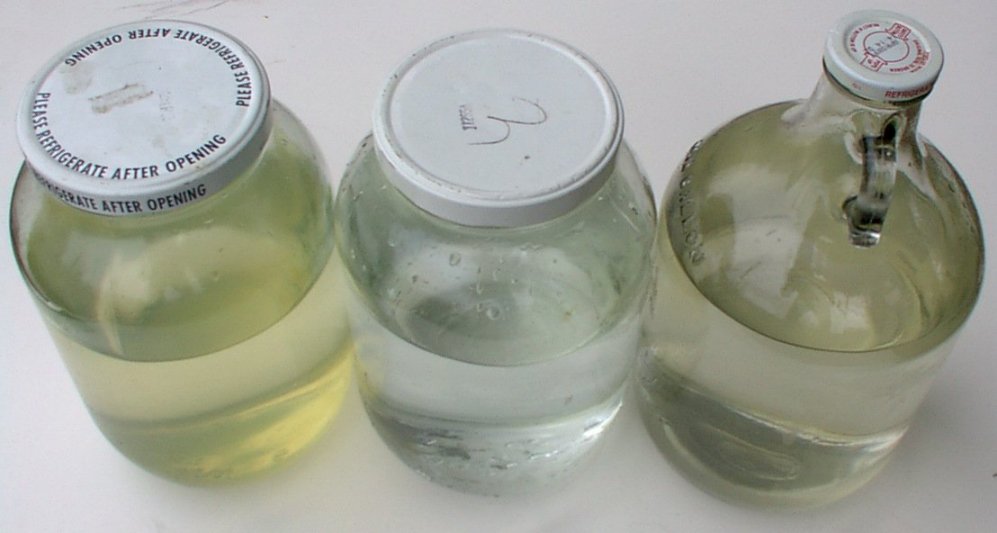
On the left is the old trap water which I collected three days ago.
In the center is ordinary tap water. And on the right is the trap water
which I just collected.
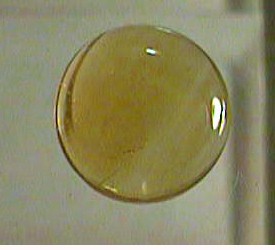
Here is an image of a citrine stone for color comparison.
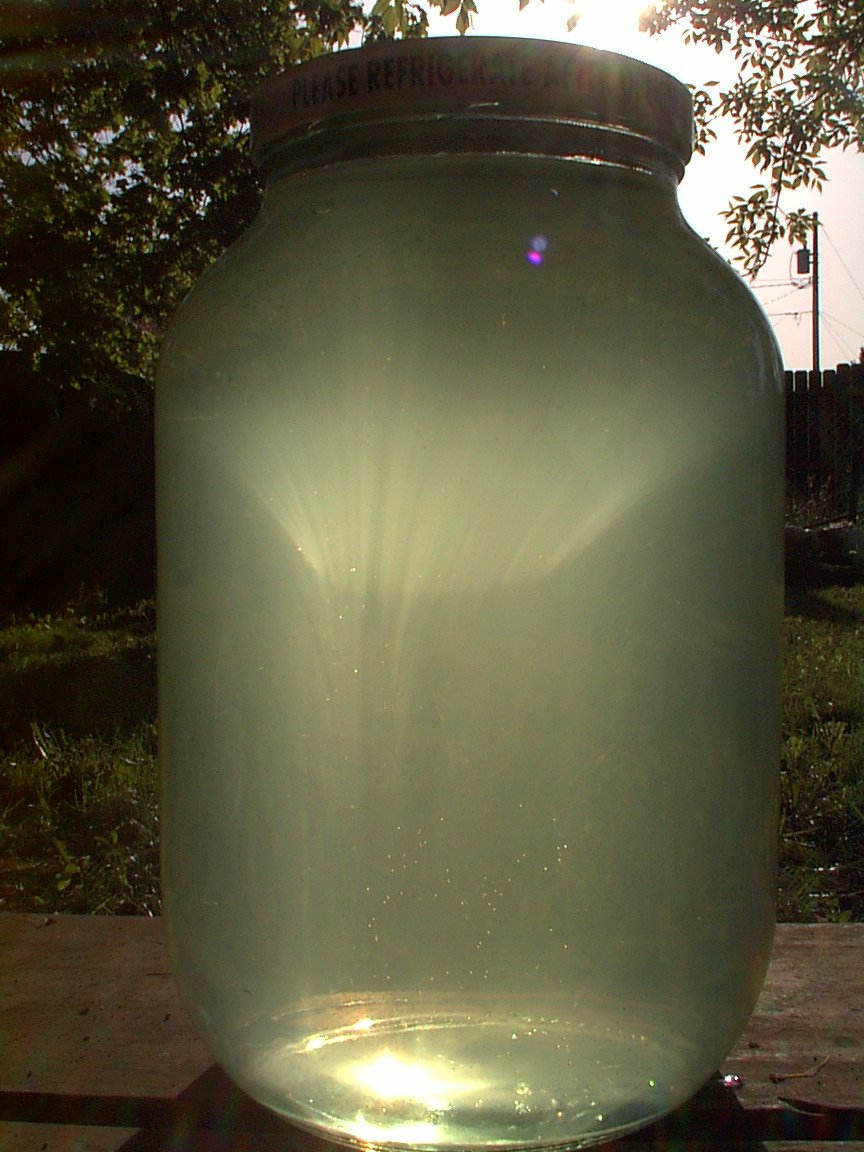
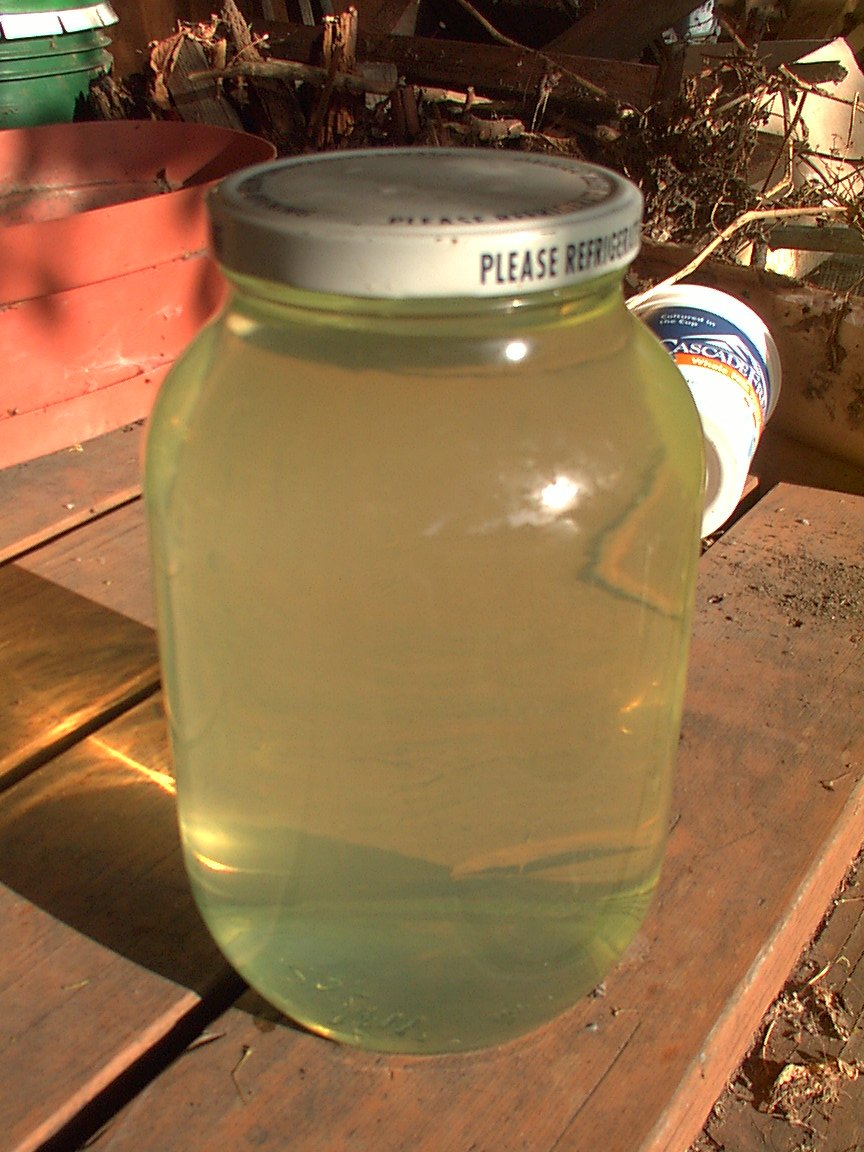
These are images of the first water that I made with this trap.
Notice the cloudy look and green tint in the water.
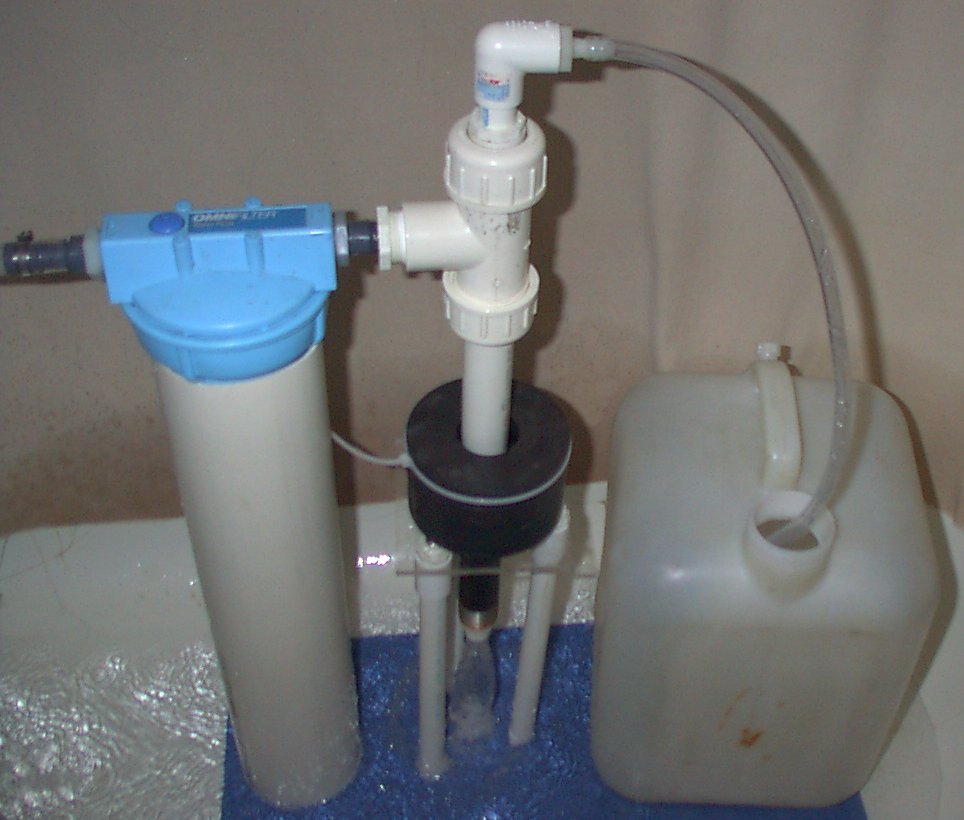
This is a variation on the House Trap working in my bath tub
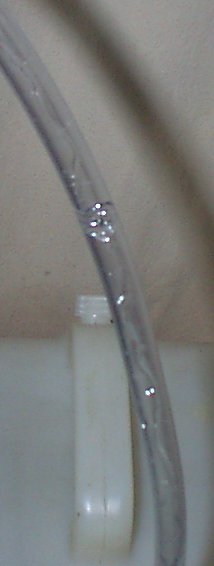
Note the swirling water trickle in the tube




